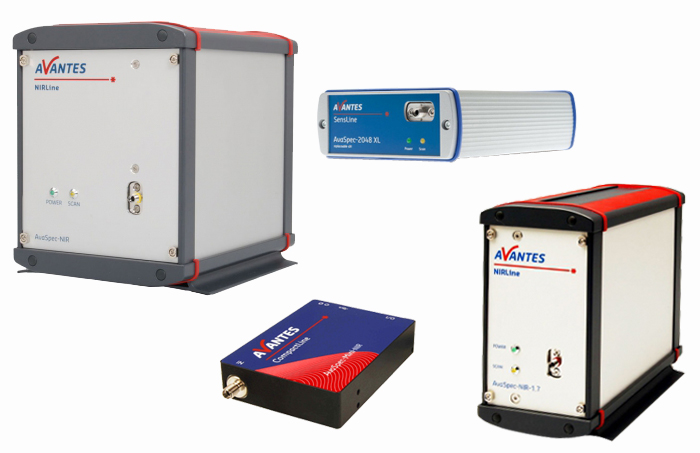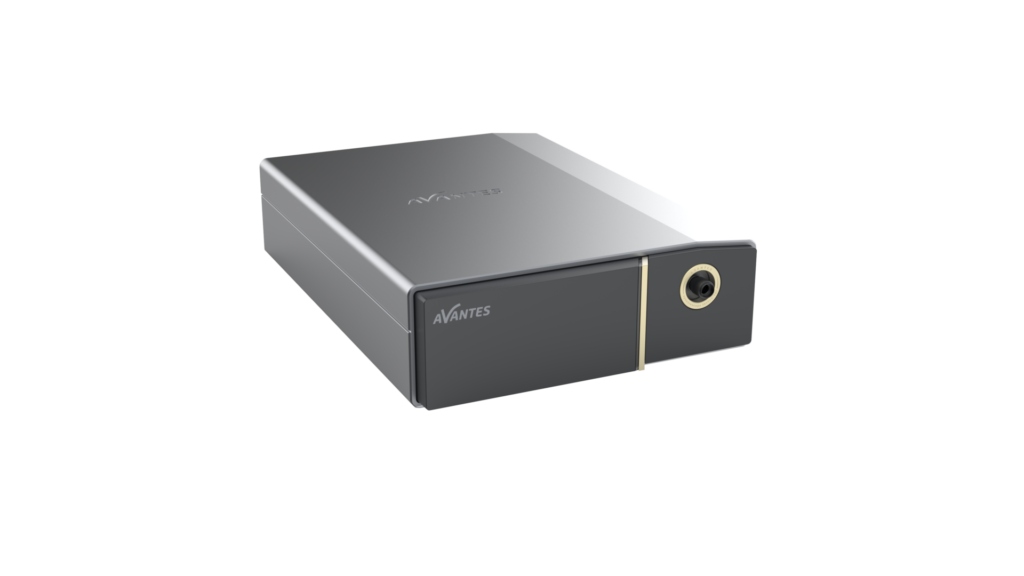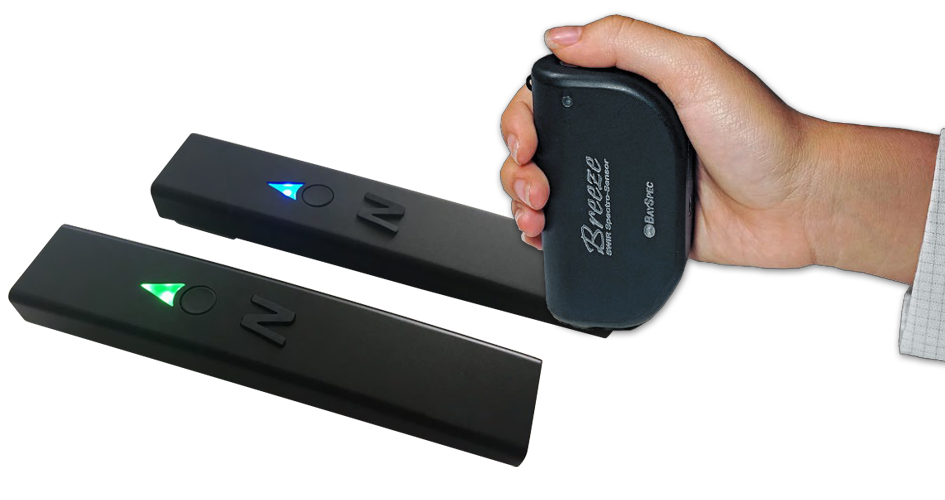Spectrometers, Spectrographs, Spectroscopy Cameras
Product Portfolio
Our extensive range of spectroscopic instruments includes spectrometers based on gratings and/or etalons with CCD / CMOS line or array sensors or cameras, but also with InGaAs detectors for applications further into the infrared domain. Custom spectrometers and spectrometer sensor engines allow OEM and customized solutions. Spectroscopy accessories like input adapters and mechanical holders round off the range.
A series of high-resolution spectrometers with sub-picometer resolution is based on VIPA etalons and CMOS cameras, also available as a dedicated Brillouin system for reliable detecting the subtle Brillouin spectral shifts.
Slit-less spectrometers with a large aperture and a wide field of view allow analyzing an extended or distant source, while compact, etalon-based spectrometers are designed for characterizing laser spectra, achieving the resolution of large gratings spectrometers while covering a larger visible and NIR wavelength range.
With high-sensitivity InGaAs cameras and no moving parts, a series of spectrometers has been developed by re-thinking the design of optical spectrum analyzers (OSA). Solving the OSA’s speed drawback, these etalon-based spectrometers can measure continuous spectra from cw and pulsed sources at 40 Hz while providing a high resolution of 4 pm.
Compact, high-resolution and high-stability CCD spectrometers feature a 100 mm Czerny-Turner optical platform coupled with a Toshiba 3648-element CCD array, also available as multi-channel CCD spectrometers for the visible wavelength domain. Very compact spectrometers based on CMOS or InGaAs sensor arrays provide resolutions down to 50 pm.
CMOS or CCD linear detectors are at the heart of a family of high-performance spectrometers, including high-speed instruments for process control, high-resolution instruments for demanding applications like atomic emission measurements and versatile instruments for common applications such as irradiance and absorbance chemistry.
Thermoelectrically cooled or uncooled high-performance, near-infrared (NIR) spectrometers based on InGaAs linear array detectors are optimized for the demands of measuring long wavelengths, featuring toroidal focusing mirrors and dynamic dark correction for enhanced stability.
For demanding spectroscopy applications such as fluorescence, luminescence and Raman, spectrometers based on cooled CCD array detectors include several high-sensitivity, low-noise instruments – with a number of them featuring back-thinned detector technology for high quantum efficiency and excellent response in the ultraviolet (UV), visible (VIS) and near-infrared (NIR) range from 200 to 1160 nm.
Our dedicated spectrometer sensor engine, comprising of a 3,648-pixel CCD line camera (also available without window) and ready-to-use spectrometer software enables users to build an OEM spectrometer by setting up their own optics and placing the line camera at the focal plane of the spectrograph. The spectrometer software provides a powerful set of spectrometer functions and releases users from the burden of programming these functions so that they can build their spectrometers much more efficiently and cost-effectively.
In case our “standard” spectrometer range should not include a suitable system, we can offer a wide range of custom spectrometer solutions, exactly tailored to your needs – contact the AMS Technologies spectrometer experts now to discuss your requirements.
Related Products
Complementing our spectrometers, we offer a broad portfolio of further optical test and measurement solutions.
Our interferometers are important tools for quality control. We carry interferometers for measuring fiber holders, single- and multi-fiber connectors, but also systems for other applications like a fiber-pigtailed Mach-Zehnder free space interferometer or Michelson and Mach-Zehnder fiber interferometers.
A broad portfolio of further devices for inspection, test and measurement of optical connectors is available like an extensive range of fiber optic microscopes for every application and budget, tools and systems for measuring passive optics and connectors, as well as other fiber properties measurement devices like fiber analysers, tensile testers, or refractive index measurement services.
Equipment like light sources, optical power meters or OTDRs allow tests of optical fibers or patch cables in the laboratory as well as in the field.
AMS Technologies’ further optical test and measurement offerings include beam profilers, integrating spheres, reflectance targets, as well as fiber sensing equipment.
Tools for fiber optics processing, dispensing and curing of optical adhesives and cleaning of optical connector surfaces round off the AMS Technologies range of solutions around optical test, tools and measurement.
Definition
Optical spectroscopy is the process of decomposing a beam of light into its wavelength or frequency spectrum, either qualitatively to detect the presence or absence of wavelength components, or quantitatively by measuring the intensity of the respective wavelength components. This spectrum is then projected onto a detector.
Optical spectrometers produce such a spectrum of the radiation of concern by means of refraction in a prism or diffraction at an optical grating. While (scanning) spectrometers often scan or measure the individual intensity lines one after the other via a monochromator, consisting of an (often movable) input and output slit as well as a rotatable grating (grating) or a movable detector (single photodiode or photomultiplier), spectrographs as non-scanning spectrometers have a fixed grating, prism or other polychromator and measure the spectral intensity components by means of a multi-channel photodetector, e.g. an array of photodiodes or a CCD array. With this tendentially simpler setup, a spectrograph can capture a spectrum faster, but with possible tradeoffs concerning the spectral resolution or the size of the range of wavelengths captured.
In addition to gratings and prisms, the generation of a spectrum in a spectrometer can also be based on an optical etalon, with high resolution even of weak or scattered light sources, for example for the detection of the tiny spectral shifts caused by Brillouin or Raman scattering.
Within spectroscopy setups, dedicated, sensitive and fast spectroscopy cameras based on CCD sensors but also InGaAs detector arrays can be used as photodetectors. Optical coherent tomography (OCT) spectrographs and spectral engines often combine such a high-speed digital camera and a robust volume phase grating (VPG) that permit the generation of precise, tomographic images instantly.
Common applications for spectrometers, spectrographs and spectroscopy cameras are the characterization of a light source or an optical component, the analysis of radiation emitted by stars in astronomy applications, the detection and measurement of chemical components in a gas or a liquid based on their absorption of characteristic wavelength components, the spectral analysis of fluorescent light radiation or spectral phase interferometry.
Raman spectroscopy is a powerful, nondestructive, in situ technique for chemical and structural identification at the molecular level based upon the molecular and crystal lattice bond vibrations. When coupled with confocal microscopy, it enables discovery and identification at a spatial resolution up to 0.2 μm with extremely high chemical specificity.
Bench-top and handheld Raman spectrometers offer unparalleled and multifaceted performance. A well-matched combination of efficient volume phase grating (VPG), stable laser source and highly sensitive CCD- and/or InGaAs detector(s) result in outstanding optical throughput with real-time spectral data acquisition in millisecond range.
Alternative Terms: Czerny-Turner Spectrometer; NIR Spectrometer; Spectroradiometer; Spectrophotometer
























